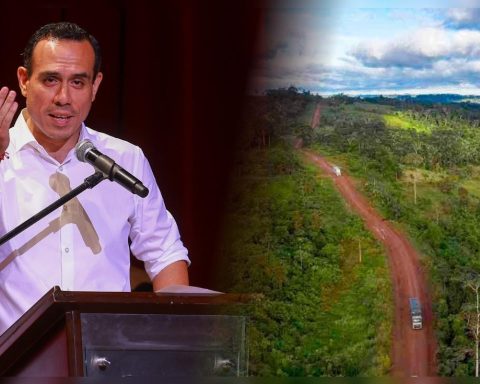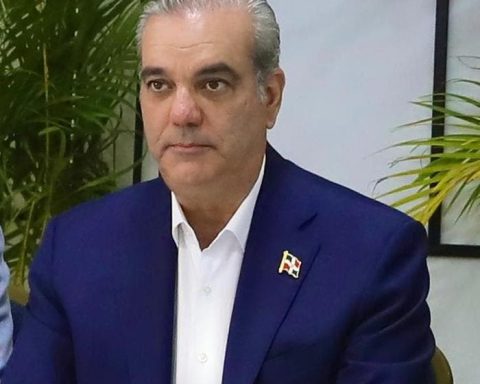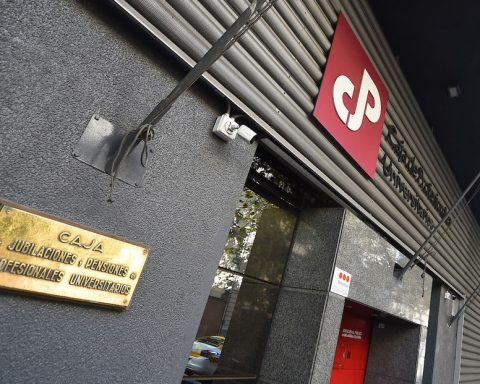The launch of NASA’s new rocket to the moon was canceled on Monday due to a technical problem, but could take place during the next launch window on Friday, the US space agency said.
Fifty years after astronauts last set foot on the lunar surface on the Apollo 17 mission, the Artemis 1 flight will mark the start of America’s program to return to the Moon, with a view to allowing humanity to eventually reach Mars aboard the same ship.
“We maintain the option for Friday,” Mike Sarafin, head of the Artemis 1 mission, said at a press conference, noting that the analysis will be resumed on Tuesday to have a better idea of the time needed to solve the problems that have arisen.
If the launch of the rocket called SLS does not take place on Friday, September 2, there is another launch window on Monday, September 5. After that, it could only be attempted again on September 19.
“I’m a little disappointed, but … I’m not surprised,” astronaut Stan Love, who has worked on the program for two decades, told reporters in Florida. “It’s a new vehicle, it has millions of parts, they all have to work perfectly.”
– Engine temperature –
The launch was initially scheduled for 8:33 a.m. (1233 GMT) from launch pad 39B at the Kennedy Space Center.
The filling of the rocket’s tanks with its ultracold fuel (liquid hydrogen and oxygen) had begun an hour late due to the risk of lightning. A leak then caused a pause during the filling of the main segment with hydrogen.
Around 07:00 local time, a new and decisive problem appeared: one of the four RS-25 engines, under the main segment of the rocket, could not reach the desired temperature, a necessary condition to start it. A problem with the valve was also found, Sarafin said.
The countdown stopped, and after more than an hour and a half of waiting while trying to fix the problem, NASA’s launch director, Charlie Blackwell-Thompson, made the decision to cancel.
The window of opportunity was only two hours long and there was not enough time to keep trying to fix the problem.
“We won’t take off until everything is ready,” NASA chief Bill Nelson said shortly after the cancellation. Engineers “will get to the bottom of the problem, fix it, and we’ll fly,” he said.
– “Hopes and dreams” –
Thousands of people, including US Vice President Kamala Harris, had flocked to the vicinity of the space center to witness the liftoff.
“While we expected to see Artemis 1 launch today, the attempt provided valuable data as we tested the most powerful rocket in history,” Harris said on Twitter. “Our commitment to the Artemis Program remains strong and we will return to the Moon.”
The objective of Artemis 1 is to test the rocket called SLS and the Orion capsule on top.
The uncrewed Orion will go into orbit around the Moon to check if the vehicle is safe for future astronauts, including the first woman and first person of color to walk on the lunar surface.
The mission will test the strength of the capsule’s heat shield, which will return to Earth’s atmosphere at almost 40,000 km/h and at a temperature half that of the Sun’s surface.
Instead of astronauts, mannequins were placed on board, equipped with sensors that will record vibrations and radiation levels.
The capsule will venture up to 64,000 km behind the Moon, further than any other manned spacecraft has gone so far.
– Loving You –
After this first mission, Artemis 2 will carry astronauts to the Moon in 2024, without landing, an honor reserved for the crew of Artemis 3, but that will not be before 2025.
By then, NASA wants to launch about one mission each year to establish a sustained human presence on the Moon, build the Gateway space station that orbits it, and set up a base on the lunar surface.
There, humanity will have to learn to live in deep space and develop all the technologies necessary for a round trip to Mars, a multi-year trip that could take place “in the late 2030s”, according to Nelson.
But before that, going to the Moon is also strategic, against the ambitions of competing nations, in particular China.
“We want to go to the south (lunar) pole, where the resources are,” especially water in the form of ice, Nelson told NBC. “We don’t want China to go to that place and say ‘this is our territory’.” YS








